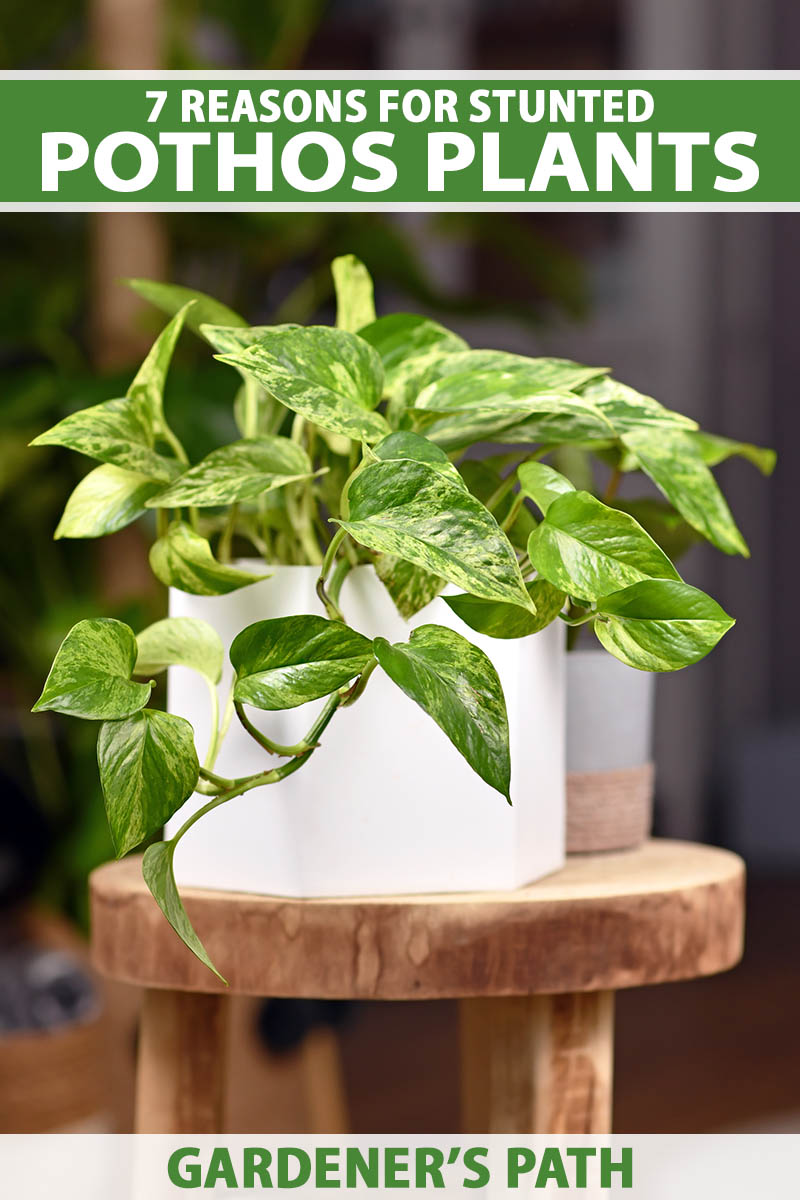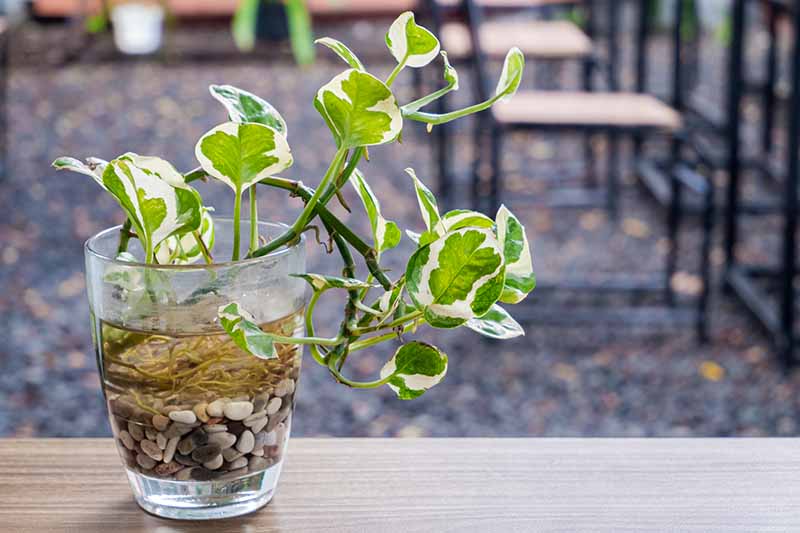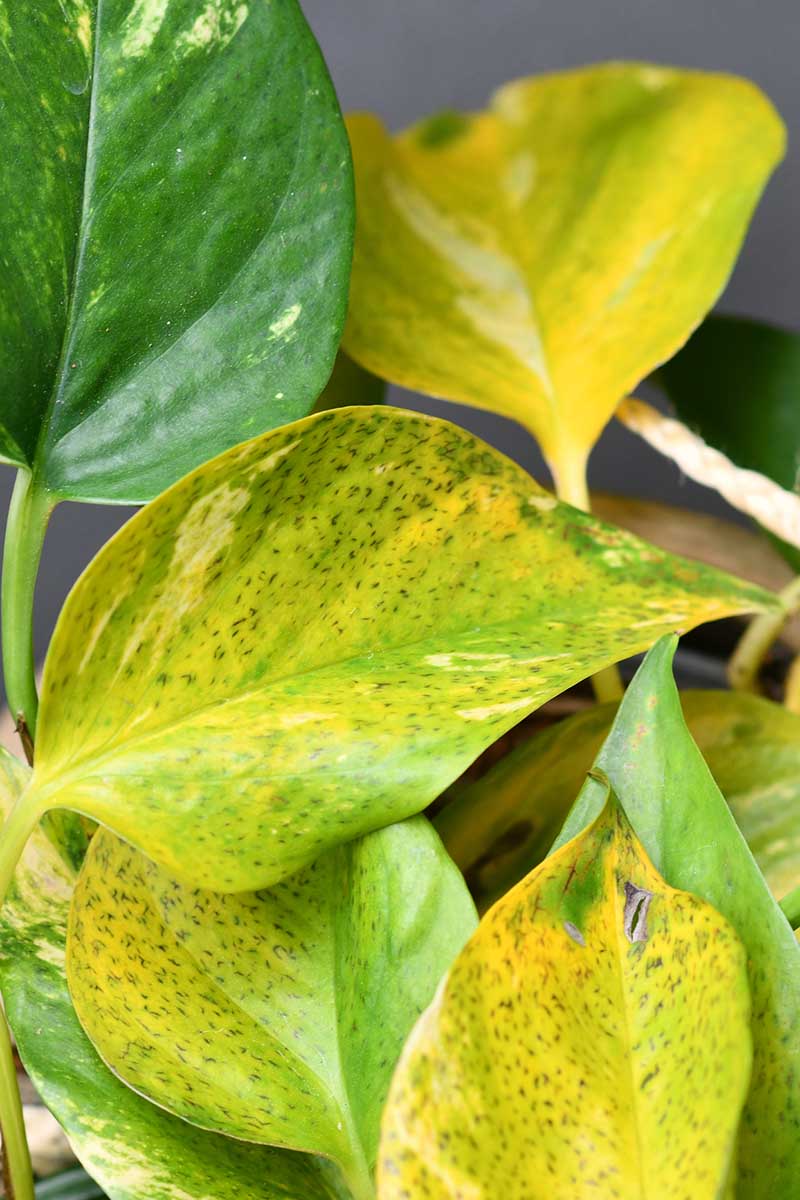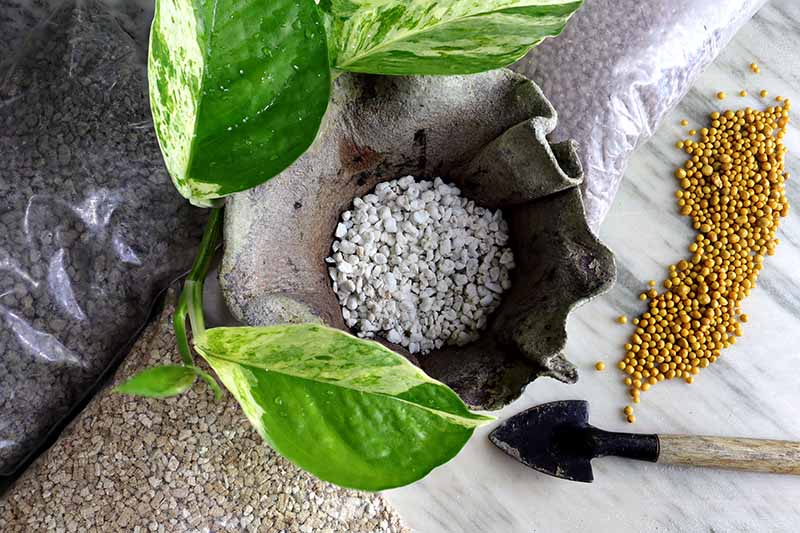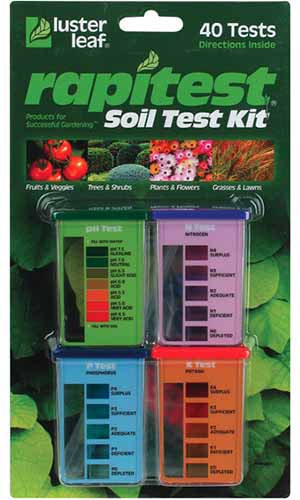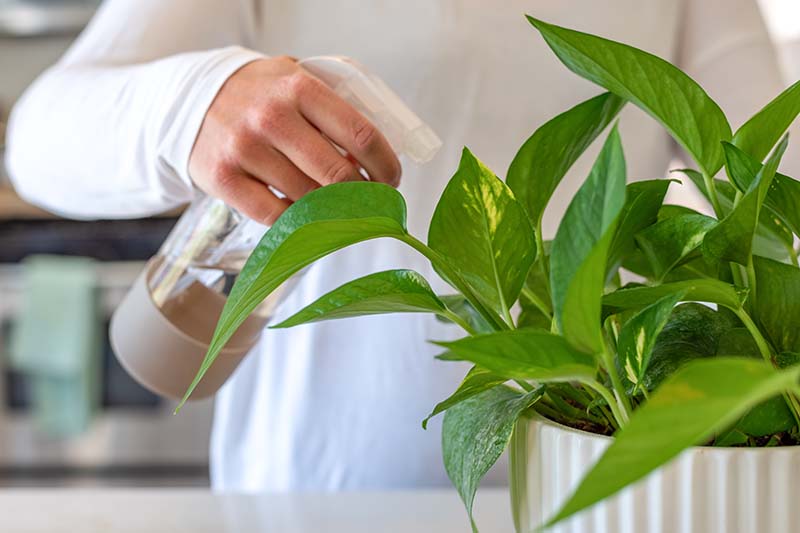You aren’t a failure doomed to a lifetime of pathetic houseplants, I promise. Pothos are living things, and like all living things, they can sometimes struggle to thrive. Anyone who has lived on a diet of fast food during a particularly busy time in their life can certainly relate. We link to vendors to help you find relevant products. If you buy from one of our links, we may earn a commission. In this guide, we’ll walk you through what can cause stunted growth and small leaves so you can sort out their woes. We’ll discuss the following: To keep any plant happy, you need to know a bit about how it has adapted to grow and what it needs to survive. Pothos is an evergreen vine that grows in the understory of forests in places like Hawaii, Fiji, Japan, the Philippines, and Vietnam. These plants don’t need much light. Moderate to bright indirect light is plenty to keep your pothos looking good indoors. They like their soil to be moist but not wet, though they can tolerate occasional dryness or extra moisture. Feeding is another area where they don’t ask for much. Some people opt to skip feeding altogether and their plants are perfectly fine – and by some people, I mean myself. Some gardeners might call it laziness, I call it economizing my time and resources. All joking aside, if you refresh the soil every couple of years, your pothos is receiving all the nutrients it needs. You can read more about growing healthy pothos plants in our guide. Knowing all this, there are a few elements that you need to consider if your plant’s growth is less than stellar. Many of these issues can cause problems with most varieties of houseplants, so this is a sort of blessing in disguise. Once you know how to spot and stop them, you’ve ahead of the game. Without further delay, let’s get your pothos growing again.
1. Cold Temperatures
Some like it hot, including pothos plants. Part of the reason that they make such wonderful houseplants is that they like it when the temperatures are in the same range that most humans enjoy. While these plants can tolerate temps into the 50s, if they are consistently in the range of 50 to 65°F, they won’t do well. So if you have yours in a vestibule or unheated room and it’s freezing outside, that devil’s ivy is going to be unhappy. Make sure to keep your plant in a spot that is nice and toasty. If you need slippers and a sweater, it’s too cold. Err on the side of too warm over not warm enough. Temperatures up to the mid-90s won’t bother your pothos.
2. Disease
A lot of people think the signs of disease will be obvious, but that’s not always the case. Sometimes the symptoms might be as subtle as stunted growth. Root rot is the most common culprit. Root rot is caused by oomycetes in the Phytophthora genus, or simply by drowning the roots in too much water. With root rot, on top of stunted growth, you might see soft brown spots on the leaves. And if you dig up the plant, the roots might look smooshy and soft. If you want to try to save your plant, remove it from its container and knock away as much soil as possible. Then rinse away the rest of the soil, leaving just the roots behind. Trim away all of the dead or diseased roots. They’re the ones that look black and mushy. Don’t ever use that particular plant to make cuttings. You can’t be sure that you’ve gotten rid of the pathogen and you might just end up making a ton of sick pothos babies. Next, it’s time to treat with copper fungicide. Look for a ready-to-spray option such as Bonide’s Liquid Copper Fungicide. Arbico Organics carries this product in 32-ounce containers, which is enough to last you through treating several plants. Bonide Liquid Copper Fungicide Take the plant outside (or just to the garage if the temperature outside is near freezing) and spray the leaves and soil thoroughly, making sure you get the undersides. Then, bring it back inside. You’ll need to do this once every few weeks for at least two months. You probably won’t see any worsening symptoms and you might assume that you’ve gotten rid of the problem, but keep treating for at least eight weeks. It may take a little time, but the new growth that emerges should look happy and robust.
3. Insects
Houseplant pests suck… literally. By that, I mean many of them feed by sucking the sap out of them like teeny-tiny vampires. And just like how Dracula drains his victims of life, so do bugs like scale, aphids, and spider mites. This is one of the easiest problems to identify because all you need to do if you see poor growth is to go over your plant carefully, looking for signs of pest activity. You might see the little insects themselves, or you may notice other signs that they are there. Aphids (insects from the superfamily Aphidoidea) are generally quite small and come in green, yellow, tan, pink, or orange, either with or without wings. Red spider mites (Tetranychus urticae) are red and look like itty-bitty dots running around on the foliage and stems. You might actually notice the fine webbing that they leave behind first, rather than the pests. Mealybugs (family Pseudococcidae) are often confused with signs of a fungal disease because they’re usually whitish gray and covered in a waxy coating. Typically, you can get rid of them by wiping them with a cotton swab dipped in isopropyl alcohol. Scale (insects in the superfamily Coccoidea) come in a range of sizes and colors, but you can look for little brown, gray, black, or tan lumps on the stems and leaves. These can also seem to be signs of a disease at first glance, but if you look really closely, you can see that they’re actually insects. All of the above can be eliminated using regular applications of insecticidal soap or neem oil.
4. Not Enough Light
Too much light can toast your plant like a bun on a grill, but not enough causes more subtle symptoms. Pothos are tolerant of low light, so you might not realize at first that your plants are unhappy. But if they aren’t receiving the light they need for an extended period of time, they will be stunted. They might also look less vibrant in color than they should, and if you have a variegated cultivar, it might not show much variegation. As with water, too little sun now and then won’t cause stunted growth. This problem is caused by a chronic situation. If your pothos is in a dark basement corner full-time and it has stunted growth, assume that the problem is a lack of sunlight. Fix it by – you guessed it – providing more light. Don’t just toss the plant into a sunny west-facing window, however. Move it gradually over the course of a week to a spot with bright, indirect light for around six hours a day. If the plant doesn’t show signs of new, vigorous growth within a few months, you probably need to consider other problems.
5. Nutrient Problems
Too little food starves your plant, and new growth is the first thing that goes when there isn’t enough nutrition. While pothos plants certainly aren’t demanding when it comes to nutrition, they still need food now and then. Typically, you can simply allow the soil to nourish the plant, especially if you are refreshing the medium every few years or so. You are doing that, right? If so, you might want to take a little sample of the soil you’re using and send it into your local extension office or do a quick at-home test to see if something is lacking.
6. Rootbound Conditions
When a plant is rootbound, this means it has exhausted the available space in its container. There is no longer enough soil and room available to the roots. Home test kits aren’t as reliable as one from a professional or conducted by an agricultural extension office, but they are fast. Luster Leaf Rapidtest Arbico Organics has tests from Luster Leaf Rapidtest available that will tell you how your N-P-K (nitrogen, phosphorus, and potassium) levels are looking. Before you go tossing in some fertilizer, do a test. Then, act on the information you’ve received. If you’ve fertilized too much, you’ll need to remove some soil and add fresh stuff. If you’ve under-fertilized, you can add what is missing to put things back on track. It can be hard to tell if your plant is rootbound sometimes, so if you’re seeing stunted growth, you might just need to pull it out of its container and take a look. If it is rootbound, you’ll see roots packed tight and circling the exterior of the container or even growing out of the drainage holes. If that’s the case, the solution is simple. Give the poor thing more room. Either plant it in a larger container, at least one size up from what it was in, or divide the plant in half and put one half back into the old container and one half into another. For tips on dividing, head to our guide on propagating pothos.
7. Underwatering
Water is incredibly important to plants (and all life, for that matter). More than any other thing, water also has the ability to mess up the growth of your pothos. Overwatering can cause rot, yellowing leaves, and other issues, but underwatering is the most likely culprit if your pothos is stunted. When a plant doesn’t get the water it needs, it can’t move nutrients throughout its system, which means it can’t grow as large and strong as it would otherwise. Think of this as a similar situation for any living thing that doesn’t receive the nourishment it needs. Other signs of underwatering include brown leaf tips and wilting like a bag of salad left out in the sun before perking back up when you add water. Failing to water enough now and then won’t stunt the growth of your pothos, so don’t worry that if you go on vacation you’ll never have a robust jungle of greenery. But chronically underwatering will absolutely cause poor leaf growth. If your plant isn’t growing like it should, it’s time to re-examine your watering schedule. Pothos plants need water, but not too much. If the top inch of soil isn’t drying out in between your visits with the watering can, then your plant is being overwatered. Conversely, if the top two inches (and then some) are drying out, you’ve let things go too far. Don’t worry, we’ve all done it. Pothos are advertised as low-maintenance houseplants and that means we can usually just set them in the right spot to liven up our home’s interior and then come around every now and then with some water. But every plant has its preferences based on the environment in which it evolved. Pothos need consistent moisture. So how do you know when to add water? I’m telling you, these things changed my life. I killed an embarrassing number of plants before I gave in and spent a few bucks to buy one. You can find meters that are designed so that you can stick the meter into the soil and get a reading in a few minutes, which is perfect if you have a lot of houseplants. If this sounds right for you, I’ve found that Active Air’s Soil Moisture Meter is perfect for the job. Not only does it give you an idea of the moisture level, but it also indicates pH and light levels as well. Arbico Organics carries this houseplant essential if you’re interested in picking one up. Active Air Soil Moisture Meter You can also read about other recommended models here. The other option is to buy a pack of sensors that you can leave in the soil permanently and they’ll alert you by the change in color that your plant is in need of water. I love these for plants that are a little more demanding – not usually pothos, but definitely for fiddle-leaf figs – or for ones that are struggling and I’m not sure why. IPPINKA Sustee Aquameters They won’t give you pH or light readings, and you can’t move them from plant to plant easily, but if you need a regular reminder to water certain plants, they’re just right.
Make Your Pothos Thrive Again
Some plants take months to recover from a problem, but pothos perks right back up once you’ve fixed the situation. Thank goodness, because it can be a real blow to one’s self-esteem when a reportedly indestructible plant isn’t looking so good. What ended up causing your problems? Share with us in the comments so others can benefit from your hard-earned wisdom! I hope this guide helped you take your pothos from pathetic to plentiful. If so, you might be interested in learning more about these houseplants. We have a few guides worth checking out next, including:
How to Properly Prune Your Pothos PlantMy Pothos Leaves Are Turning Yellow! What’s Wrong and What to Do
